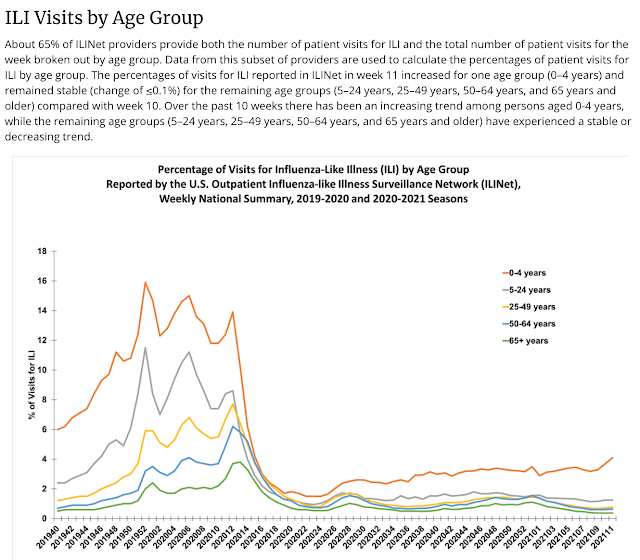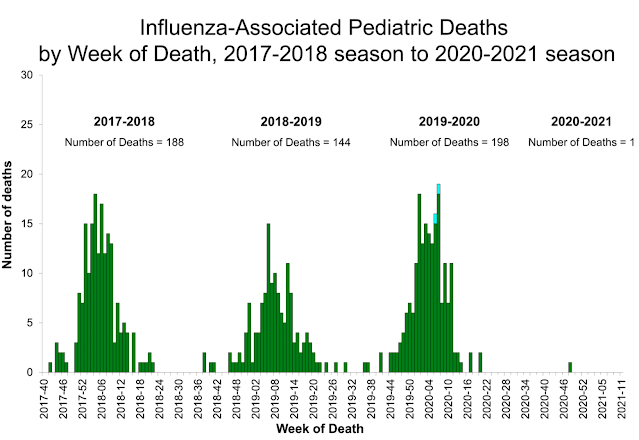COVID and its Variants
COVID-19 means the coronavirus strain that emerged in 2019. The outbreak started in Wuhan, China (a huge city of many millions that has sprung up from almost nothing over two or three decades during China's sustained economic boom). The most likely sources are either outdoor "farmer's markets" or an accidental release from major government biotechnology center. It appears to be derived from a bat virus that initially impacted only a few dozen at most people who had been to a cave with infected bats in a part of Southern China distant from Wuhan quite a few years earlier. By March of 2020, however, the pandemic had spread globally and ultimately took a much greater toll outside China (and East and Southeast Asia generally) than it did in the vicinity where it emerged, in part, due to strict measures imposed by the Chinese government to limit its spread.
About fourteen months ago, COVID-19 emerged into our consciousness although it was present abroad and in cases that had not been diagnosed at the time sooner. This post reviews what we've learned about the disease, how we've responded to it, and what other impacts the pandemic has had.
It is transmitted mostly by droplets of spit in the air, which face masks are quite effective of shortening the range of, and less effective at preventing the penetration of (except for scarce medical grade masks).
Initially, COVID was seen as a respiratory disease, but increasingly, it appears to be a disease that impacts the ability of the body to process oxygen and that otherwise impairs organ function. Many of the symptoms are similar to the flu or pneumonia, while others, like the loss of taste, are very distinctive to COVID.
The early treatments for severe cases oriented to a respiratory disease model were not very effective, although they saved some lives in moderately severe but not the most acute cases with respirators and the like. With a better understanding of the disease, treatments of severe cases have significantly improved although these treatments still only moderate dent the severity of the symptoms and the number of deaths resulting from comparably severe cases in treated people.
The original strain of COVID killed about one in 200 people, heavily concentrated among nursing home residents, the old, immune compromised adults, obese people, people with diabetes, and people with certain conditions especially respiratory ones. The young and the healthy are less likely to have visible infections (although they can be infected and serve as carriers) and when they show symptoms they are less severe and less deadly. Still some people of all ages have died of COVID. High viral loads (e.g. among medical personnel, transit operators and law enforcement in hot spot areas) are associated with more frequent infections and more severe infections than a person's age and health risks would predict.
Many more non-deadly COVID cases, with the same basic risk profile, ranged from asymptomatic or a mild illness, to worse than any flu you've ever had, to difficulty breathing and/or organ failure and hospitalization, to "long haul" serious symptoms that persist for many months (either post-hospitalization or in lieu of hospitalization), not infrequently with long term disabilities resulting from the infection. There were multiple episodes in the U.S. and abroad where intensive care units and hospital capacity was overwhelmed resulting in many deaths.
While severe cases are rare in children, a very different mix of symptoms in severe cases has been observed in a small number of children.
There are at least a couple of variant strains of COVID-19 that are circulating that are more virulent, more contagious, and/or less effectively stopped by the vaccines. One is commonly called the U.K. variant, and the other is called the South African variant, after the regions where these variants have become predominant. But, as vaccines and prior infections associated with the original strains in the U.S. stop those strains from spreading, these variants (and perhaps new ones not widely known at this time) will almost surely become predominant in the U.S. sooner or later.
The Scale Of The Pandemic
U.S. deaths have been higher relative to the norm due to COVID than any time in the last 120 years, including the 1918 flu. (There was a steep deficit of U.S. deaths immediately after the 1918 flu, however, and it isn't inconceivable that something similar could happen in the U.S.).
There have been 571,000 U.S. COVID deaths and 32 million confirmed cases. But, the number of actual COVID cases is probably closer to 114 million, based upon the number of deaths and the infection to death ratio in populations where there has been comprehensive testing. This works out to something like 40% of U.S. adults. COVID deaths are falling, and nationwide, so are COVID cases. There is a great deal of regional variation in these trends in the U.S., which had little positive national guidance in responding, however, and there are still many hotspots. U.S. deaths are falling much more rapidly than U.S. cases because people at the highest risk of death have been given the vaccines first, and the vaccine rollout has been handled better than the pre-vaccine prevention measures were handled.
I predicted about 540,000 deaths in the first twelve months in early March of 2020, and that prediction unfortunately proved quite accurate. This prediction started with the best available information about the number of flu cases per year in the U.S. I then adjusted up for the best available data at the time on how much more contagious COVID-19 was than the flu and adjusted up again on the assumption that it would be less seasonal than the flu. After that I adjusted down the predicted number of COVID-19 cases for assumptions related to better than a typical flu season precaution measures, producing my estimate of 108 million COVID-19 cases in the U.S. in the first 12 months. I then divided this estimate by 200 which was the best available data at the time on the mortality rate per total number of cases. It helps that my estimate didn't try to time when or where within the U.S. these deaths would occur, although I did break my estimate down by a roughly accurate breakdown of the age demographics of those who would died from COVID-19. The least data based and most judgment based part of the estimate was the estimate of how much more effective than the precautions taken in a flu season the precautions taken would be. But I did do that knowing what political leadership was in place at the time.


Worldwide that have been about 3,122,000 COVID deaths and 148 million confirmed cases, although the actual number of COVID cases worldwide is probably closer to 624 million. In both the U.S. and worldwide the discrepancy arises because many people with less severe COVID infections are never tested for it.
There has been immense regional variation in the impact of the pandemic. Generally speaking, North America, Europe and Latin America have been hard hit, while Asia and Africa have done much better. But even within these regions there has been great variation in the severity of the outbreaks, a lot of which is due to the governmental and societal response, some of which is due to population densities and connections to global trade and migration, and some of which for poorly understood regions appears to be due to regional ecological or environmental conditions.
Some places in the world are doing much worse than the U.S. right now. India is currently seeing a massive spike in cases, hospitalizations and deaths after keeping COVID tightly under control for almost a year. Brazil isn't doing well.
Europe is lagging in vaccinations, while the U.S. is proceeding well in vaccination (although certainly not optimally) under President Biden's leadership.
President Trump's Response
President Trump, personally, through his rhetoric and policy actions (before in dismantling U.S. infectious disease response agencies before COVID and in his approach to the disease once it hit) dramatically increased the number of cases in the U.S., the number of U.S. deaths, and slowed the vaccine stage we are in now.
It wouldn't be unreasonable to estimate that the number of cases and deaths in the U.S. would be three to ten times smaller without his mismanagement of the crisis, and he has probably increased the proportion of people unwilling to get a vaccine for COVID by a similar factor of three to ten.
President Trump's personal incompetence and willful malfeasance realistically cost the U.S. many hundreds of thousands of lives and caused millions of lives deeply impaired by severe, hospitalized or "long haul" COVID to occur that could have been avoided with even "par for the course" political leadership.
Vaccines
Multiple vaccines have been developed.
The three vaccines circulating in the U.S. {Pfizer, Moderna and Johnson and Johnson) are nearly 100% effective at preventing death or the most serious hospitalization class illnesses from COVID, although only 65%-95% effective at completely preventing infection from the original strains and significantly less effective at preventing other variants. There are some moderately inconvenient side effects in many people from the vaccines, about a one in a million rate of serious side effects, and about a one in a hundred million rate of death from the vaccines, but the risk-reward ratio is overwhelmingly clear. Several other vaccines are circulating in Europe, Russia and China, and a couple more are about to enter widespread use. Their effectiveness has varied, especially against the new variants, and some have modestly more side effects, but all of them are highly effective at preventing death or severe COVID cases requiring hospitalization.
The minimum vaccination age is currently sixteen. People younger than that can be infected and spread COVID strongly, but younger people are already at much lower risk of death or serious illness from COVID than older people for reasons that aren't entirely clear. A lowering of the minimum vaccination age is imminent and early trials of the vaccines on young people have been very successful.
Booster vaccine shots are planned for about six to twelve months out from now to address the variants and extend the duration of the protection of the original vaccines, but they aren't available yet.
Nationwide in the U.S., about 53% of the eligible population (141 million people) have had at least one vaccine shot which provides at least significant partial immunity even in the two shot regimes.
A reasonable estimate of the percentage of adults who have either had at least one shot of a vaccine or have had COVID in the U.S. is about 72% which is a level at which herd immunity starts to become a factor.
We are, however, coming close to transitioning in the U.S. from administering vaccines to people eager to trying get them to people who are apathetic, have trouble accessing the healthcare system, or who actively don't want to be vaccinated (a view that sadly had a strong GOP bias in the U.S. and a strong bias towards less educated people).
My Immediate Circle
My children were both away at college when COVID-19 hit in March of 2020. Their colleges shut down with short notice and they drove home together with everything they could fit in their SUV (abandoning other possessions) from New England to Denver, with states shutting down as they passed through them. They finished the semester with remote instruction from home after a quarantine at home when they returned. My elder daughter was in her last semester and graduated remotely. My younger son was able to return to campus with strict regular testing and other measures in place for part of his sophomore year.
I worked remotely for several months before returning to work at my office. During that time, my assistant, my office manager, and one attorney contracted COVID-19, with my assistant's girlfriend and our office manager contracting serious cases requiring hospitalization.
My attention is focused on sixteen family members (including significant others of my children and myself), four people who work in my office, and three people who used to work in my office (as well as several of their significant others whom I don't itemize).
Of them, nine family members and two co-workers have received all of their shots although two of those ten people still have some additional time before the two weeks after the final shot for them to be fully vaccinated kicks in. Two more family members (who have had continuous negative COVID tests on a regular basis) and my other two co-workers have vaccine shots scheduled. Three family members aren't old enough to get the vaccine yet. The remaining two family members in the group of twenty people could get the vaccine but are in no hurry to do so.
None of these twenty people have gotten COVID so far, although three of my former co-workers did, and one of them, as well as one of their significant others, had very severe cases that required hospitalization. Several places I frequently, including grocery stores, had outbreaks early on,.
The U.S. Economy
Movie attendance is still almost nil, as are live concerts (especially indoors) and other indoor live entertainment, although sports are recovering with accommodations. Transit use is way down. Air travel is still down significantly compared to pre-COVID or even Great Recession levels, but up quite a bit from the bottom. Hotel occupancy is still down, but is up a lot from the bottom and is now only modestly from normal. Gasoline consumption has basically returned to normal. More people are going to offices and gyms and routine medical appointments and doing non-essential shopping although online shopping is up. Residential real estate has remained strong throughout, and personal bankruptcies are down. Commercial real estate is in trouble and commercial bankruptcies are very high. Remote working has soared while office utilization has crashed, in many cases permanently. Some industries like promotions are mostly dead. Others, like the practice of law and grocery stores and liquor stores, have been impacted much less. Despite high COVID specific demand for medical services, overall consumption of medical services has been way down (in part contributing to elevated death rates especially early on). Construction hasn't been very hard hit. Labor intensive kinds of farming is suffering. Restaurant utilization shows great regional variation.
There were episodes of record low oil demand and oil prices in the U.S. (briefly negative prices), and unemployment and declines in GDP in the U.S. quickly spiked to Great Depression levels although they have recovered far more quickly than in ordinary business cycle recessions. The decline in employment has been very disproportionately in women, in substantial part, due to the need to have mothers with secondary incomes at home with schools closed or operating only remotely for many months.
The Global Economy
The most pronounced difference globally between the U.S. outbreak and the outbreak elsewhere, is that almost everyplace else (except Brazil and Sweden and a few other European countries in the early going) did a better job of controlling the outbreak pre-vaccine, and almost every other country has provided more of a social safety net.
Early lockdowns worldwide produced record low levels of air pollution and vibrations on Earth in the modern era.
Lockdowns were associated with dramatically reduced rates of premature births and adverse pregnancy outcomes (for women already pregnant when the pandemic began), presumably before far fewer women were working late in their pregnancies, especially in Europe.
U.S. Government Operations
The voter turnout in 2020 was record high due to accommodations for COVID making it easier to vote and intense interest. The Census was behind schedule and probably less complete than many times. Courts are mostly operating remotely with jury trials still at a near standstill nationwide, but other matters moving along, albeit sluggishly with a backlog developing.
U.S. Crime and Criminal Justice
School shooting were almost nil for many months because almost no one was going to school in person, but as restrictions have eased, mass shootings have returned. Murder rates are up significantly. Domestic violence rates are up moderately. Rates of many other kinds of crime are down significantly. Incarceration rates are down, but COVID cases, serious COVID cases and deaths from COVID among people who are incarcerated have been very high relative to the norm of the demographics of incarcerated people.
Early on in the pandemic, mass Black Lives Matters (BLM) protests against excessive uses of force by police in mass outdoor protests resulted in significant policy changes and reductions in police use of force, although also in increased crime, in part, due to a demoralized police force that felt it lacked community support in those communities.
Other U.S. Impacts
Immigration to the U.S. is at record lows, due to the weak economy and a temporary near total halt of international travel.
The year 2020 had record low U.S. pregnancy rates, with modest regional variation.
Suicide has been down.
There have been almost no flu deaths since COVID struck due to the generally effective against airborne virus transmission measures that were taken.
















